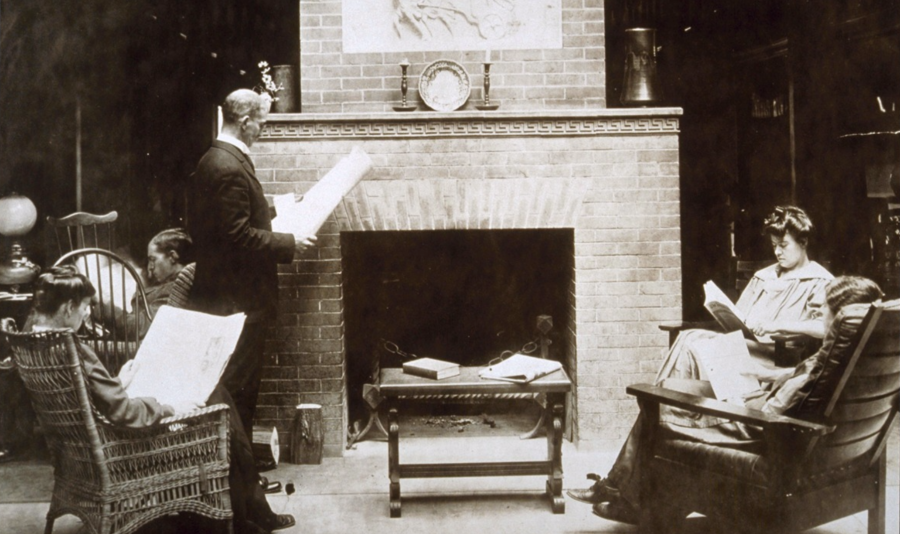Post by Catherine
We at the excd.lab are a highly interdisciplinary bunch, with backgrounds spanning anthropology, linguistics, psychology, philosophy, music, biology, and statistics. Nowhere is this more evident than in our weekly journal club, where we come together (in an archaeology laboratory!) to discuss cultural evolution and learn more about each other’s areas of research.

The first rotation of papers was intended to be an introduction to each other’s fields. If you could inflict on (er, ‘present to’) your colleagues one paper from your specialty, what would it be?
- Wierzbicka, A. (2016) Back to ‘Mother’ and ‘Father’: Overcoming the Eurocentrism of Kinship Studies through Eight Lexical Universals. Current Anthropology 57(4): 408-429.
- Fincher, C. L. and R. Thornhill. (2008) Assortative sociality, limited dispersal, infectious disease and the genesis of the global pattern of religion diversity. Proc. R. Soc. B. 275: 2587-2594.
- Krems, J. A., R. I. M. Dunbar, and S. L. Neuberg. (2016) Something to talk about: are conversation sizes constrained by mental modeling abilities? Evolution and Human Behaviour 37: 423-428.
- Acerbi, A., et al. (2013) The Expression of Emotions in 20th Century Books. PLoS ONE 8(3): e59030.
- Ronen, S., et al. (2014) Links that speak: The global language network and its association with global fame. PNAS 111(52): E5616-E5622.
- Voronov, M. and J. A. Singer. (2002) The Myth of Individualism-Collectivism: A Critical Review. The Journal of Social Psychology 142(4): 461-480.
- Jonas, E., and K. Kording. (2016) Could a neuroscientist understand a microprocessor? bioRxiv preprint.
- Rzeszutek, T., P. E. Savage, and S. Brown. (2012) The structure of cross-cultural musical diversity. Proceedings: Biological Sciences 279: 1606:1612.
- Lupyan, G., and R. Dale. (2016) Why are there different languages? The role of adaptation in linguistic diversity. Trends in Cognitive Sciences 20(9): 649-660.
The second set of journal club readings fell under the theme ‘classic papers in your field.’ What early paper in your field’s history best showcases why your specialty is so exciting? Note: we interpreted ‘early’ in a metaphorical sense.
- Bohannan, L. (1966) Shakespeare in the Bush. Natural History.
- Harvey, P. H., and A. Purvis. (1991) Comparative methods for explaining adaptations. Nature 351: 619-624.
- Pullum, G. K. (1989) The great Eskimo vocabulary hoax. Natural Language and Linguistic Theory 7: 275-281.
- Enfield, N. J. (2009) Relationship thinking and human pragmatics. Journal of Pragmatics 41: 60-78.
- Croft, W. (2008) Evolutionary Linguistics. Annual Review of Anthropology 37: 219-234.
- Bartlett, F. C. (1920) Some Experiments on the Reproduction of Folk-Stories. Folklore 31: 30-47.
- Gallagher, S. and D. Zahavi. (2008) The Phenomenological Mind: An Introduction to Philosophy of Mind and Cognitive Science. (Chapter One) Routledge.
- Nerlove, S., and A. K. Romney. (1967) Sibling Terminology and Cross-Sex Behaviour. American Anthropologist 69: 179-187.
- Summers, T. (2015) ‘Sparks of Meaning’: Comics, Music and Alan Moore. Journal of the Royal Musical Association 140: 121-162.
- Crick, F. H. C., and L. E. Orgel. (1973) Directed Panspermia. Icarus 19: 341-346.
The third sequence of papers explicitly focused on the present day. What’s an exciting paper in your field from the past few years?
- Kanwal, J., et al. (2017) Zipf’s Law of Abbreviation and the Principle of Least Effort: Language users optimise a miniature lexicon for efficient communication. Cognition 165: 45-52.
- McNamara, R. A., and J. Heinrich. (2017) Kin and kinship psychology both influence cooperative coordination in Yasawa, Fiji. Evolution and Human Behaviour 38: 197-207.
- Mesoudi, A., K. Magid, and D. Hussain. (2016) How Do People Become W.E.I.R.D.? Migration Reveals the Cultural Transmission Mechanisms Underlying Variation in Psychological Processes. PLoS ONE 11(1): e0147162.
- Buckley, C. D., and E. Boudot. (2017) The evolution of an ancient technology. Royal Society Open Science 4: 170208.
- Haigh, H. (2008) Internationalisation, planetary citizenship and Higher Education Inc. Compare: A Journal of Comparative and International Education 38(4): 427-440.
- Hill, K. R. et al. (2011) Co-Residence Patterns in Hunter-Gatherer Societies Show Unique Human Social Structure. Science 331: 1286-1289.
- Fortunato, L., C. Holden, and R. Mace. (2006) From Bridewealth to Dowry: A Bayesian Estimation of Ancestral States of Marriage Transfers in Indo-European Groups. Human Nature 17(4): 355-376.
- Chagnon, N., et al. (2017) Cross-cousin marriage among the Yanomamo shows evidence of parent–offspring conflict and mate competition between brothers. PNAS 114(14): E2590–E2607.
We’re now partway into our fourth cycle of journal club papers. We don’t have a theme so far, aside from the entirely independent selection of two papers by Richard McElreath, but we’re beginning to learn what sort of papers make for interesting journal club discussions. Ideally, we’re looking for papers that bring together big ideas from multiple disciplines, that clearly explain their hypotheses and methodologies to a generalist audience, and that have implications that we can tie into our own specialities. (Easier said than done, right?!)
- Legare, C. H. 2017. Cumulative cultural learning: Development and diversity. PNAS 114(30): 7877-7883.
- McElreath, R., et al. 2008. Beyond existence and aiming outside the laboratory: estimating frequency-dependent and pay-off-biased social learning strategies. Philos Trans R Soc Lond B Biol Sci 363(1509): 3515-3528.
- Aplin, L. M., B. C. Sheldon, and R. McElreath. 2017. Conformity does not perpetuate suboptimal traditions in a wild population of songbirds. PNAS 114(30):7830-7837.
- Krawczak, M., and R. H. Barnes. 2010. How obedience of marriage rules may counteract genetic drift. J Community Genetics 1:23-28.
What papers have you been reading recently? Do you have any suggestions for our lab group? Let us know in the comments here or on Twitter, @excd_lab!